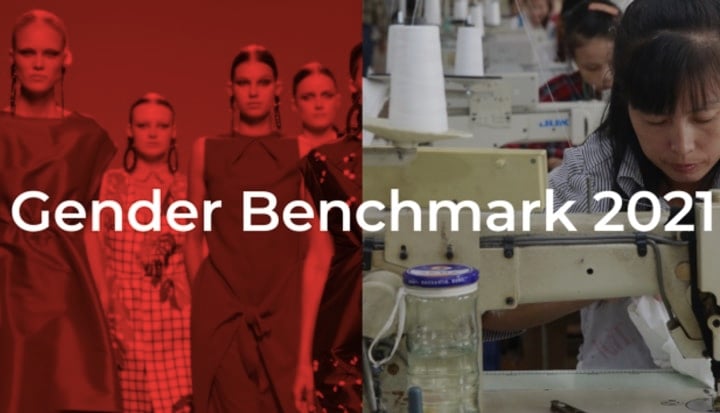At the onset of the COVID-19 pandemic, many of the world’s most loved fashion brands were quick to cancel or postpone their orders due to a shortfall in consumer demand. With high-street shoppers in lockdown, companies made dishonourable use of their force majeure contract clause to delay or avoid payments to suppliers; leaving the thousands of factories who make up their supply base out of pocket, by an estimated USD16 billion. Without orders, or with orders unable to be shipped or paid for, these factories found themselves unable to pay their workforce, pushing millions of women garment workers out of work and into poverty. Did these companies overlook the risk? Or were they failing to recognise and address the rights of women long before the pandemic hit?
Fast on fashion, slow on gender equality
In June 2021, the World Benchmarking Alliance (WBA) released its first ever Gender Benchmark, assessing how the 35 most influential apparel companies are responding to the most salient gender issues in the industry. The benchmark, which looked at company data, policies and commitments in place between January 2018 and January 2021, found that the majority of companies are failing to translate their public commitments on gender equality into meaningful action. In fact, the industry’s fashion giants scored an average of only 29 points out of a possible 100, signalling a concerning lack of action taken by companies to move the needle on Sustainable Development Goal 5: achieving gender equality and empowering all women by 2030.
But is there a connection between fashion companies lacking a commitment to gender equality and how they responded to the pandemic? Or any evidence that companies taking action on gender equality are responding better than those that aren’t?
Establishing the link between gender equality and the COVID-19 response
Earlier in 2021 the WBA conducted a study to identify how companies responded to the increased human rights risks associated with the COVID-19 crisis. Twenty-four of the 35 companies assessed in our Gender Benchmark were also assessed in our Corporate Human Rights Benchmark (CHRB) COVID-19 and Human Rights Study, which was published in February 2021. Our analysis indicated a relative correlation between the studies. Companies that scored higher in the Gender Benchmark also scored better in the CHRB study, signalling that having gender-sensitive mechanisms in place helped companies better weather the storm of the pandemic and ensured better protection for the vulnerable women at the heart of the industry.
We found, for example, that 58% of the companies assessed as taking action to support the payment of a living wage for women in their supply chain in the Gender Benchmark, also provided financial support to workers in their supply chain during the pandemic. Whereas only 8% of companies assessed as taking no action to support a living wage, provided financial support during the pandemic.
Even more suggestive of this positive link, we saw that 100% of companies assessed in the Gender Benchmark as systematically supporting their suppliers to ensure a gender-responsive, safe and healthy work environment for their workers, also worked with suppliers to implement social distancing, personal protective equipment (PPE) and hand-washing facilities during the pandemic. All of these companies also worked with their suppliers throughout the pandemic to address the health and safety needs of the most vulnerable workers, including women.
Conversely, of the companies assessed in the Gender Benchmark as not offering any gender-responsive support on health and safety in the supply chain, only 13% worked with suppliers to implement social distancing, PPE and hand-washing facilities during the pandemic. None of these companies put in place measures to address the health and safety needs of the most vulnerable workers.
Why is this link important?
The COVID-19 pandemic has uncovered and aggravated the systemic inequalities already faced by women in global value chains, such as the unpaid care burden. Whilst women around the world have been overwhelmingly responsible for this burden long before the pandemic, the only company to require its suppliers to provide childcare for their workers, was Aditya Birla. Zero companies require suppliers to provide other family support for workers who need to care for their dependents. The pandemic has only made this burden more apparent, pushing women out of work to pick up the pieces at home.
Within the fashion industry, it is clear that the impacts have been felt most harshly by the millions of low paid women, working in both the visible and invisible corners of the supply chain. Concerted action must be taken by companies now. If they don’t, not only will companies be failing their female employees; they will be guilty of preventing millions of women around the world from being the huge asset to society they can be.










